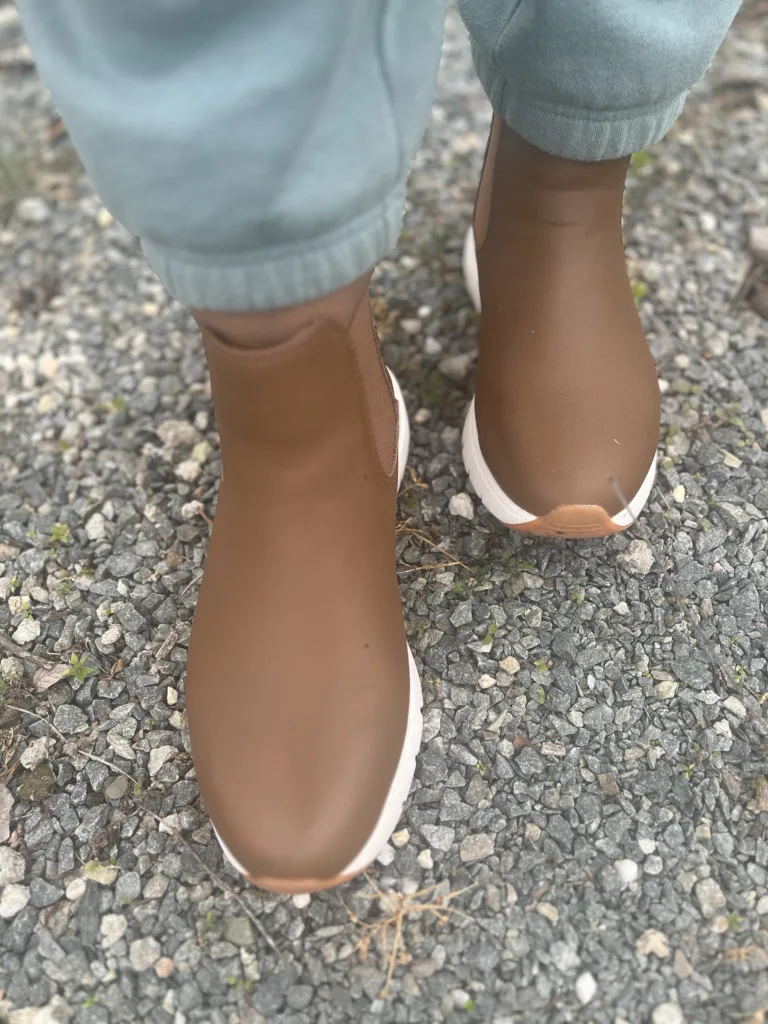Crossroads: Rome, Athens, and the Social Significance of the Early Mediterranean World
When one speaks of the ancient Roman or Greek empire, there’s a moment of existential terror that transpires. The sheer depth of influence that both have had on the modern Western world is so enormous it could rival that of the Andromeda galaxy or the entire observable universe (at least culturally speaking). I’m of course exaggerating, but, as far as the average contemporary North American, European, or Australian is concerned, that sentiment is very much true!
Every element of ancient Greek/Roman culture…be it language, architecture, technology, art, religion (or lack thereof), food, clothing, or war… has seeped its way into our lives (in one way or another, whether we notice it or not). Even those who live outside the Western world cannot deny its influence and its impact (for better or worse). But if I were to address every element of Western civilization in this article, it wouldn’t be an article; it would be 100,000 online encyclopedias. So, today, let’s airdrop a few pins into the cities of Rome and Athens and zero in on just a few specific locations.
Rome
We’ll begin in Rome. There are so many places to choose from- all the seven hills, the Tiber River, the Appian Way, the Spanish Steps, or the Baths of Caracalla. But let’s start with the two places people are most familiar with: The Roman Forum/Colosseum and St. Peter’s Basilica. The Roman Forum (a.k.a. the Forum Romanum in Latin) was the “heart of Rome” …its hotspot for religious, political, and social activities. The ancient Romans constructed this rectangular-shaped area at the low-lying base of the Capitol and Palatine Hills, and historians believe that people’s first open-air meeting occurred there around 500 B.C.E. (the founding of the Roman Republic)1.
According to the classic legend, brothers Romulus and Remus founded the city of Rome in 753 B.C.E. A rising conflict ensued. In a Cain-and-Abel turn of events, Romulus killed Remus, became king, and named Rome after himself. Romulus then allegedly formed an alliance with his rival, Titus Tatius, and the two established a neutral meeting zone1. That neutral meeting zone became the Roman Forum.
Roman Forum
The Forum initially served as a marketplace for day-to-day shopping1. Its versatility and functionality grew over time, and Roman citizens began holding public affairs there as well1. The Forum gradually developed, expanded, and progressed, and its citizens added arches, statues, basilicas, and other buildings1. The Forum became overcrowded during the reign of Julius Caesar, and so Caesar built a new forum next to the old one1. Emperor Augustus added onto the new forum.1.
The Forum was home to the Senate House (“Curia”), which served as the council house for the Roman senate and a site for various political events1. People rebuilt it several times and converted it into a church in the 7th century C.E.1. The Temple of Saturn (erected in 498 B.C.E.) was one of the earliest temples to occupy the Forum1. The Romans built the temple as a dedication to the god of agriculture, and they also used it as a treasury1.

The circular-shaped Temple of Vesta honored the goddess of the hearth, family, and home, the Temple of Castor and Pollux (completed c. 484 B.C.E.) honored Rome’s eponymous twin demi-gods, the Rostra served as a platform for people to give speeches from, and the main Sacre Via (“Sacred Way”) ran through the forum, connecting various important sites1. Emperor Domitian honored his brother (Emperor Titus), with an Arch built in his name1. Domitian erected the arch in 81 C.E.1 The arch commemorated Titus’s victory at the Battle of Jerusalem1.
During the Forum’s last major expansion, its workers constructed the Basilica of Maxentius (during Constantine’s reign, c. 312 C.E.)1. Many of the Forum’s ancient buildings and sites began crumbling and were destroyed in 410 C.E., when the Roman Empire began to fall1. During the Middle Ages, Romans converted the Forum into a “Campo Veccino,” or field for cattle-grazing1. Archaeologist Carlo Fea excavated the site in 18031. Numerous excavations took place over the next century, and today it is one of the most frequented spots for tourists in the world1. At least 4.5 million people visit it annually1.
What kind of events took place in the Forum? The multi-functional site accommodated numerous elections, public speeches, criminal trials, social gatherings, business dealings, public meetings, religious ceremonies, educational events, and gladiatorial matches at the Colosseum1.
The Colosseum
The Colosseum, located just east of the Roman Forum, was a massive stone amphitheater that Emperor Vespasian of the Flavian Dynasty commissioned. Around 70-72 C.E., Vespasian gifted the Colosseum to the Roman people (the Colosseum replaced Nero’s Golden Palace, which burned in 64 C.E.)2. Vespasian’s son, Titus, opened the Colosseum (“Flavian Amphitheater”) in 80 C.E.2 The arena presented 100 days of gladiatorial melees and wild animal fights2. Then, after four centuries of active use, the arena fell into neglect2. In the late 18th century, Italians used it as a source of raw building materials, and popes visited the site as a sacred spot for early Christian martyrs2.
The antecedents for building the Colosseum came after the notorious, decadent Roman emperor, Nero, took his own life (68 C.E.). A series of civil wars and years of misrule and excess followed2. No fewer than four emperors took the throne in Nero’s wake, and the fourth, Vespasian, ruled for 10 years (69-79 C.E.)2. The Flavian emperors (Vespasian and his two sons, Domitian & Titus) attempted to resettle the tumultuous atmosphere, restore the senate, and promote public welfare2. One of the major ways of doing so was to provide people with sensational entertainment, and the Colosseum did just that!

The freestanding Colosseum, which measures 620 by 513 feet (190 by 155 meters), was the largest Roman amphitheater in the world2. The builders constructed it from concrete and stone2. The distinctive exterior included three sets of arched entrances (80 in total), which semicircular arches supported2. The three sets included Doric (bottom), Ionic (middle), and Corinthian (top) columns2. At the front of the Colosseum is the Arch of Constantine (built 315 C.E.)2. It honors Emperor Constantine’s victory at the Milvius Bridge (Pons Milvius)2.
The Colosseum could seat more than 55,000 spectators, and the builders constructed the seats according to social rank/order2. The awnings on the top floor that unfurled protected spectators from the sun2. Generally, the gladiatorial combatants were enslaved people, criminals, or prisoners of war (nearly all men)2. Events included hand-to-hand combat, wild animal fights, and even mock naval battles2. Ridley Scott’s famous film, Gladiator (2000), with Russell Crowe and Joaquin Phoenix, richly captured the Roman gladiatorial scene and the general atmosphere of the empire during that era.
St. Peter’s Basilica and the Sistine Chapel
The other major Roman landmark is undoubtedly St. Peter’s Basilica…home to the Vatican and the seat of the Catholic pope. In 64 C.E. when a fire raged through Rome, Nero blamed the inferno on the Christian sect and executed many innocent devotees3. Nero believed that Christians brought about their own destruction by refusing to worship the Roman gods and goddesses3. The execution of St. Peter, one of the Christian preachers, took place at the Circus of Nero (where the public could view executions for apparent fun and entertainment) …nowadays known as St. Peter’s Square3. The Romans allegedly crucified St. Peter upside-down (according to a widely held Christian belief), as Peter believed he didn’t deserve to be executed like Jesus Christ3.
Between 326 and 333 C.E., Roman Christians, under the reign of Emperor Constantine, built the Trophy of Gaius and later Old St. Peter’s Basilica under the site of St. Peter’s Tomb3. The basilica flourished and became a major pilgrimage site for the Western world3. St. Peter’s Basilica hosted Papal coronations and other religious ceremonies3. Charlemagne was crowned Emperor of the Holy Roman Empire inside the basilica in 800 C.E3. In 1505 C.E. though, Pope Julian II demolished the old church and built a new one in its place3.

Pope Paul V oversaw its initial construction, which lasted at least 120 years3. In 1626, the new church was officially established in the heart of the Vatican City3. The pope-appointed artist Carlo Maderno added a nave and façade to the basilica3. Gian Lorenzo Bernini was responsible for the basilica’s final additions, including the Baldacchino and Chair of St. Peter. (as well as St. Peter’s Square outside the church)3.
Between 1473 and 1481 C.E., architect Giovanni de Dolci erected the Sistine Chapel- a private chapel within the Vatican Palace- for Pope Sextus IV.4 The chapel was a rectangular brick-building with a barrel-vaulted ceiling, six arched windows on each side, and walls well-adorned with frescoes by various Florentine masters (painted between 1481 and 1483 C.E.)4. Six frescoes on the north wall by Perugino, Pinturicchio, Sandro Botticelli, Domenico Ghirlandaio, and Cosimo Rosselli depict the life of Christ4. Six frescoes on the south wall by the same artists (as well as Luca Signorelli and Bartolomeo della Gatta) depict events from the life of Moses4. Tapestries depicting events from the Gospels and the Acts of the Apostles surround the lower portions of the side walls4.
The most renowned contribution to the Sistine Chapel, though, came from Michelangelo, who painted the ceiling and the west wall behind the altar4. Pope Julius II commissioned him in 1508 to do so, and Michelangelo depicted stories from the Old Testament, the Last Judgment, and, of course, the classic “Creation of Adam” (where the figures of Man and God touch fingers)4! In 1989, a 10-year process began. The goal was to remove all the excess dirt, smoke, and varnish that had accumulated over the centuries4. The workers cleaned and restored the Last Judgement in 19944.
Athens
That’s a taste of Rome. Now let us jump back in time to the second half of the Western world’s dynamic duo…ancient Greece. Athens is by far Greece’s most notable city, and Athens’ legendary name to fame is its ancient citadel, the Acropolis.
The Acropolis
The Acropolis (literally, “highest point”), one of the world’s most famous ancient archaeological sites, was located on a limestone hill (the Attica plateau) high above Athens, Greece5. Its four hills include the Likavitos Hill, Pynx Hill, Philapappos Hill, and the Hill of the Nymphs5. People have inhabited the Acropolis since prehistoric times, and, over the centuries, the ancient “high city” served as a home to kings5. It was also the mythical home of the gods, a religious center, and a tourist attraction5.
No records indicate what happened at the Acropolis before the Mycenaeans cultivated it during the Bronze Age, though.5. Historians believe that the Mycenaeans built a massive compound surrounded by a great wall (almost 15 feet thick and 20 feet high)5. They situated this great wall on top of the ancient city to house its local ruler and household5.

In the 6th century B.C.E., the Athenians built the Bluebeard Temple, a limestone temple, in honor of the goddess Athena5. They later erected a shrine to Artemis Brauronia (the goddess of expectant mothers in Greek mythology)5.
The Athenians started building the majestic marble Old Parthenon in 490 B.C.E. (at a time when the Persians had destroyed the previous Bluebeard Temple)5. 10 years later, the Persians attacked, burned, leveled, and looted the Old Parthenon as well5. The Athens then buried their remaining structures inside natural caves and built two new fortifications (one on the rock’s north and south side) to prevent further losses5.
The Acropolis’ “Golden Age” (460 – 430 B.C.E.) took place under the rule of Pericles5. Pericles initiated a massive, 50-year-long building project to bring the Acropolis to splendor5. In doing so, he commissioned two major well-known architects (Callicrates and Ictinus), as well as renowned sculptor Phidias5. The Acropolis remained mostly unchanged during the Peloponnesian War (in which the Spartans defeated the Athenians)5. Citizens did add a minor temple honoring Caesar Augustus and Rome several centuries later (27 B.C.E.)5.
The major edifices that came to define the Acropolis include the Temple of Athena Nike, Statue of Athena Promachos, Propylaea, Erechtheion, and its piece de resistance, the Parthenon.
The Parthenon
The Parthenon- built between 447 and 432 B.C.E.- was dedicated to Athena Parthenos, the goddess of Athens6. The sculptor Phidias constructed the colossal statue of her inside the magnificent temple, which proclaimed that Athens was a force to be reckoned with6. A coalition of Greek forces defeated the invading Persian armies under Darius and Xerxes, and so the Athenians wanted to send a symbolic message of power and success to the Mediterranean world6.
The Parthenon remained in use for more than a thousand years (despite explosions, looting, pollution, and the simple ravages of time)6. The builders of the Parthenon used Pentelic marble known for its pure white appearance and fine grain6. The marble also contains traces of iron that oxidize over time, giving the exterior a soft honey color that emanates at sunrise and sunset6. The temple itself- designed in the Doric and newer Ionic styles- measures 30.88 meters by 69.5 meters6. A 4:9 ratio was used in its construction for several aspects (namely the diameter of the Doric columns in relation to the space between them, the height of the building in relation to its width, and the width of the inner cella to its length)6.

The outer temple contains 8 columns on the front and back and 17 on each of the sides (most contained 6 and 13, respectively)6. Within the temple, six additional columns align the inner cella at the front and back6. People would enter through large wooden doors embellished with decorations in bronze, ivory, and gold6. The cella consisted of two separate rooms- the smaller opisthodomos (“back room”), which the Athenians used as their treasury, and the larger adyton (“not to be entered”), where they housed the statue of Athena6.
The builders used cedar wood beams and marble tiles for the roof and decorated it with acroteria (palms and other figures)6. They place the palms and other figures at the temple’s corners and central apexes6. Lion-headed spouts at the roof corners also drained away any water6. The Parthenon itself- which at least 7.2 million people visit annually- inspired many temples like it, including the Lincoln Memorial in Washington D.C.
Western vs. Middle
Cicero, Ovid, Lucretia, and Hannibal…Hippocrates, Socrates, Aristotle, and Plato. Too many Romans and Greeks to cover…too many gods and goddesses. Don’t forget The Odyssey, The Iliad, The Metamorphoses, and The Oresteia. Ancient Rome and Greece gave us characters like Hercules, Ajax, and Achilles. They gave usnumerous groundbreaking plays…numerous tragedies…numerous dialogues and philosophical treatises. They brought forth elegant discoveries in medicine, geography, astronomy, and mathematics. We could spend our whole lives studying them and barely scratch the surface.
There is one leg of the “Western” triangle that we are still missing- Jerusalem. Jerusalem is of course the notorious “Holy Land” that many Christians and Jews all go on pilgrimages to. The Sea of Galilee…Calvary Hill…Bethlehem and Nazareth…the Wailing Wall and the Dome of the Rock!
If we wanted to make the “Western” triangle a “Western” square, pentagon, or hexagon, we could also throw in Egypt, Mesopotamia, or Constantinople.
The Europeans and the Americans obviously borrowed from these ancient civilizations (especially their architecture and views on government), but was what they borrowed from “Western” civilization? Rome, Athens, Jerusalem, and so forth all encircle the Mediterranean Sea (“Middle Earth,” literally). Perhaps “Middle (Central) Civilization” is a more fitting term.
Humanity began its journey in northeastern Africa (near present-day Ethiopia, Kenya, and Tanzania). Then we went our own separate ways. Like kids graduating high school, some stayed behind in their hometowns. Others traveled all over the globe. Some- like the Mayans and Incas, journeyed to the “New World.” Others ventured to China and Japan or India. But those who settled in the Mediterranean really did occupy the ultimate crossroads in human history. Traders and travelers from Europe, Africa, and Asia all of course convened at the Mediterranean, and so the Mediterranean really was the most diverse region on earth!
Ultimate diversity ironically brings humanity more clarity and simplicity. The more various societies clash, the more they learn to reach an attainable resolution. Humanity wants to simplify. They want to get back to the most elegant premise of life…the one that drives society towards a singularity. But they also want that singularity to be one with a rich and honest amalgamation of different and desirable cultures! Any proper “middle civilization” will do just that, and it will bring us that much closer to the ultimately desirable society. In the ultimately desirable society, clothing, music, food, architecture, physical attributes, religion, and so on and so on may vary, but the values (ones that may have previously clashed, but then subsequently reconciled and resolved) remain uniform. Take a glimpse at the old Mediterranean world…the world of Rome and Greece…the empires that initially pushed in that direction!
SOURCES
[2] Colosseum – Dates, Facts & Location (history.com)
[3] History of St. Peter’s Basilica | 64 CE to Today (st-peters-basilica-tickets.com)
[4] Sistine Chapel | History, Paintings, & Facts | Britannica
[6] Parthenon – World History Encyclopedia
Discover more from DG Speaks
Subscribe to get the latest posts sent to your email.






